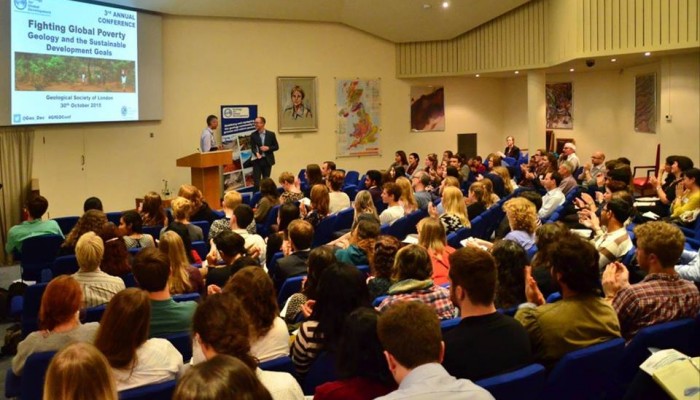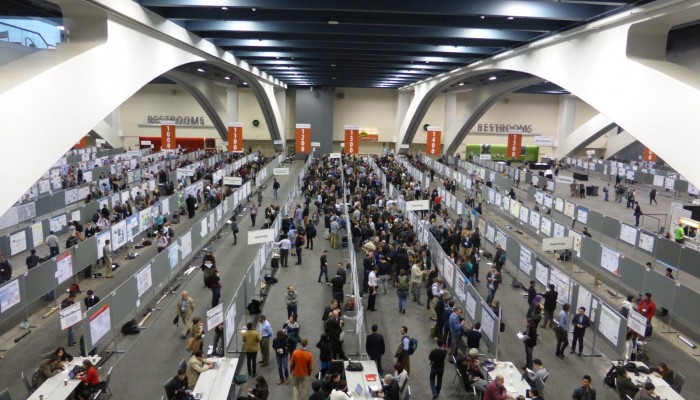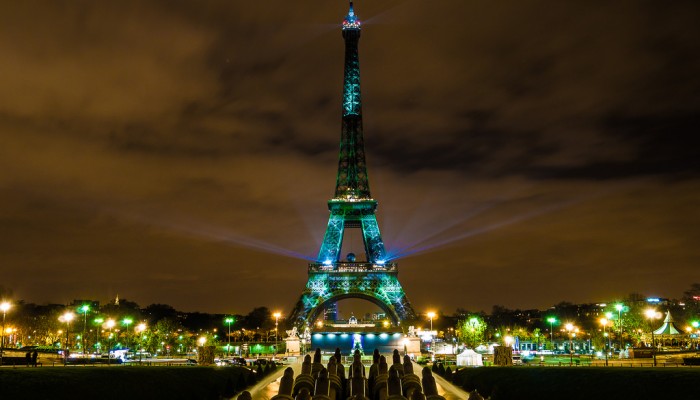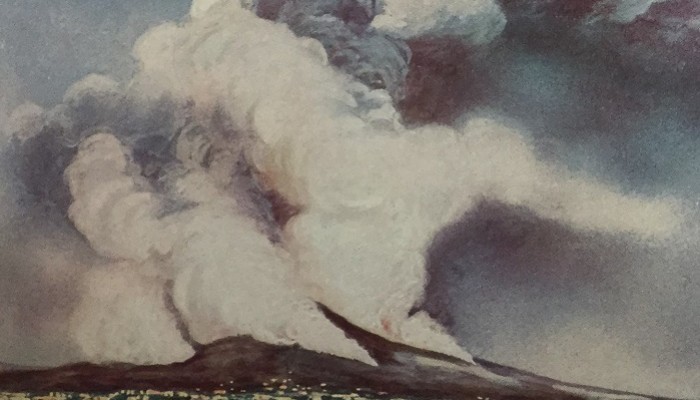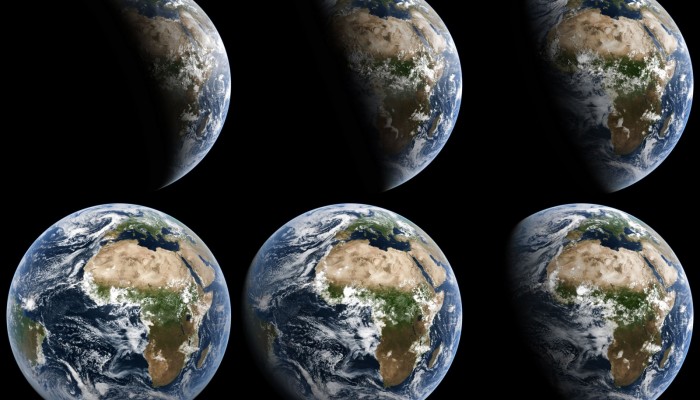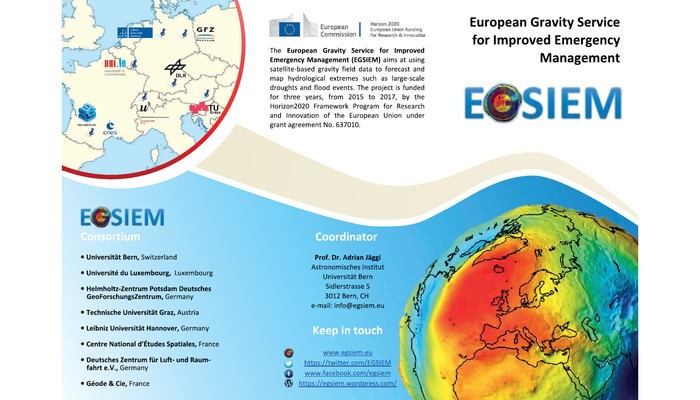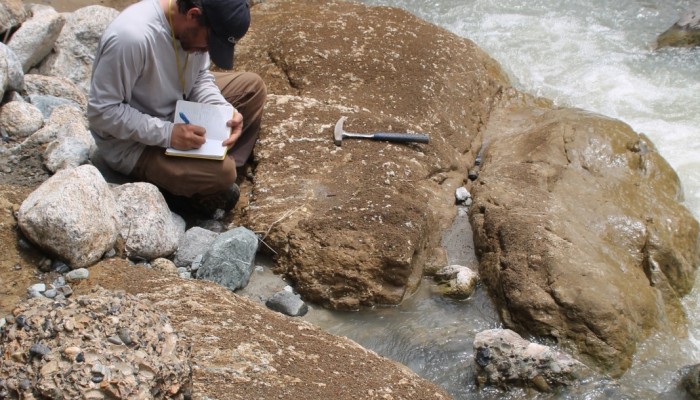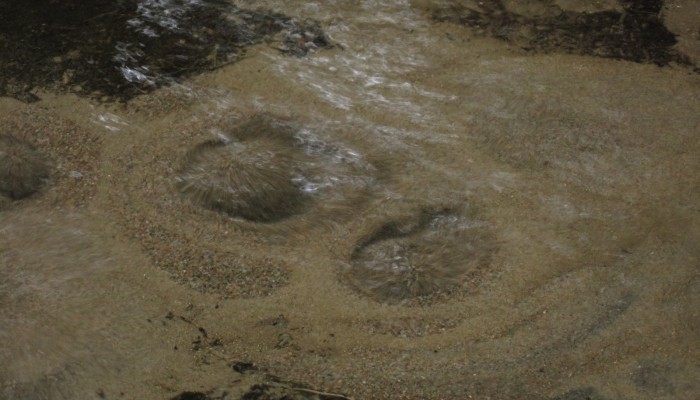2015 has been a significant year for global development efforts, with major agreements on disaster risk reduction, sustainable development and climate change. The hard work has only just started, with significant work needed over the coming years and decades to deliver real, positive change. Sendai Framework for Disaster Risk Reduction (DRR) 2015-2030 Agreed in March 2015, this framework aims to s ...[Read More]
If you didn't find what you was looking for try searching again.
Cryospheric Sciences
Image of the Week — AGU Fall Meeting 2015
The American Geophysical Union (AGU) Fall Meeting, which takes place every December in San Francisco is ending today. With more than 24 000 attendees, 14 000 poster presentations and 7 000 talks, the AGU meeting is the largest conference on geophysical sciences in the World. The cryosphere is one the topics covered by the meeting and we hope that this year edition was a fruitful for every partici ...[Read More]
GeoLog
GeoPolicy: What was decided from the Paris COP21?
Last week saw the world’s leaders come together in Paris for the 21st ‘Conference of the Parties’ (aka COP21) to discuss climate change. The 12 day meeting saw over 50,000 participants (half of which from Government organisations) come to reach an agreement on limiting greenhouse gas (GHG) production. Background Manmade climate change, resulting from the increased production of GHG into the atmosp ...[Read More]
VolcanicDegassing
The first volcanic eruption to be photographed?
In the digital era of instant communication, breaking news of volcanic eruptions usually arrive image-first. This year, spectacular eruptions of Calbuco (Chile), Fuego (Guatemala) and Etna (Italy) have all made it into the end-of-year ‘top tens‘, in glorious multicolour detail. But when was the first photograph taken that captured one instant during a volcanic eruption? And which was t ...[Read More]
Green Tea and Velociraptors
New fossil croc on the block
This was originally posted on the PLOS Paleo blog Crocodiles are freakin’ amazing animals. They’ve been around for about 250 million years, and throughout this time have survived two mass extinctions, and at least twice decided to hitch up and take to the seas. Their historical diversity, and general weirdness, was vast compared to what we see in modern crocs, which are on the face of it all fairl ...[Read More]
GeoLog
Geoscience hot topics – Part II: the Earth as it is now and what its future looks like
What are the most interesting, cutting-edge and compelling research topics within the scientific areas represented in the EGU divisions? Ground-breaking and innovative research features yearly at our annual General Assembly, but what are the overarching ideas and big research questions that still remain unanswered? We spoke to some of our division presidents and canvased their thoughts on what the ...[Read More]
Geodesy
EGSIEM wants to use GRACE gravity field data for operational flooding and drought management
The terrestial water cycle leaves traces in the Earth’s gravity field The current onset of el Nino is raising hope in California to replenish some of its multiyear water deficit. Due to the warm pool of water on the East side of the Pacific, more rain, and consequently also larger potential for flooding is expected. At the other side of the Pacific, the water is colder than usual leading to ...[Read More]
GeoLog
The Sustainable Geoscientist – how many papers should academics really be publishing?
In this guest blog post, Nick Arndt, Professor at the Institut des Sciences de la Terre, Grenoble University, reflects on the pressures on academics to publish more and more papers, and whether the current scientific output is sustainable. Imagine a highly productive car factory. Thousands of vehicles are built and each is tested as it leaves the factory; then it is stored in an enormous parking l ...[Read More]
Biogeosciences
The Panamanian Isthmus is not entirely guilty after all!
“According to new research, the land bridge connecting Central and South America rose more than 10 million years earlier than originally thought” Traditionally, closure of the Panama Isthmus has been deemed responsible for the co-occurrence of two major events: The large Pleistocene glaciations and the Great American Biotic Interchange (GABI). Existing evidence indicating a ca ...[Read More]
GeoSphere
Bubbling Merrily: Artesian Springs
I recorded the video above on a recent field camp near Deep River, Ontario. This video shows a great example of a flowing artesian spring which is bubbling up at the headwaters of a creek. The water is freezing, crystal clear and totally delicious! The classic textbook on groundwater, Freeze and Cherry, puts the attraction of groundwater springs nicely when they say “Flowing wells (along wit ...[Read More]

